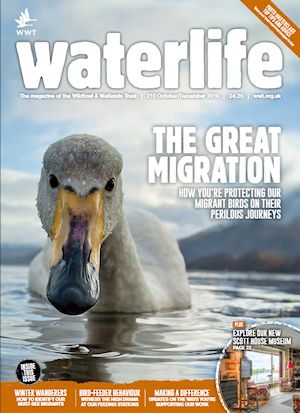| The following wildfowl, amongst others, can be found in the Geese Of The World Zone at WWT Slimbridge, click image for information: - |
| |
|
 |
|
|
|
 Red-Breasted Goose Red-Breasted Goose |
| The Red Breasted goose is native to Eurasia and is of the Branta genus and is a relative of the Brent Goose, despite its appearance. |
| |
|
 |
|
|
|
 Brent Goose Brent Goose |
| The Brent Goose, also known as the Brant Goose, is a member of the Branta genus. There are three types of sub-species of Brent Goose, the Dark-bellied, the Pale-bellied and the Black Brent Goose. |
| |
|
 |
|
|
|
 Lesser White-Fronted Goose Lesser White-Fronted Goose |
| The Lesser white Fronted Goose, which is closely related to the White Fronted Goose, is found in northernmost Asia. |
| |
|
 |
|
|
|
 Coscoroba Swan Coscoroba Swan |
| The Coscoroba Swan is the smallest of the wildfowl called a ‘Swan’. It belongs to the subfamily Anserinae in the family Anatidae which includes ducks, swans and geese. |
| |
|
 |
|
|
|
 Andean Goose Andean Goose |
| The Andean Goose is a member of the duck, goose and swan family Anatidae and the shelduck subfamily Tadorninae. |
| |
|
 |
|
|
|
 Baikal Teal Baikal Teal |
| The Baikal Teal, also known as the Bimaculate Duck or squawk Duck, is a dabbling duck. |
| |
|
 |
|
|
|
 Cape Barren Goose Cape Barren Goose |
| The Cape Barren Goose, also known as the Pig Goose, is resident in Southern Australian and was named after Cape Barren Island where they were first sighted by European explorers. |
| |
|
 |
|
|
|
 Demoiselle Crane Demoiselle Crane |
| The Demoiselle Crane is found in central Eurasia and is the smallest of the Cranes. It is similar in appearance to the Common Crane but is slightly smaller. |
| |
|
 |
|
|
|
 Ferruginous Duck Ferruginous Duck |
| The Ferruginous Duck, also known as the Ferruginous Pochard, is a diving duck from Eurasia. |
| |
|
 |
|
|
|
 Freckled Duck Freckled Duck |
| A distant relative of geese and swans, their ducklings resemble tiny cygnets. They travel great distances to avoid drought and breed from June to December. |
| |
|
 |
|
|
|
 Lesser Whistling Duck Lesser Whistling Duck |
| The Lesser Whistling Duck is also known as the Indian Whistling Duck or Indian Whistling Teal. They feed during the night and are found resting in flocks around Lakes and Paddy fields during the day. |
| |
|
 |
|
|
|
 Magellan Goose Magellan Goose |
| The Magellan Goose, also known as the Upland Goose, is a sheldgoose and is indigenous to the southern part of South America. |
| |
|
 |
|
|
|
 Marbled Teal Marbled Teal |
| The Marbled Teal or Marbled Duck, generally feeds by dabbling but is actually classed as a diving duck. |
| |
|
 |
|
|
|
 Ross's Goose Ross's Goose |
| The Ross’s Goose belongs to the Chen genus and is native to North America and Canada. |
| |
|
 |
|
|
|
 Ruddy-Headed Goose Ruddy-Headed Goose |
| The Ruddy-Headed Goose is a sheldgoose of the sub family Tadorninae, which breeds in southern most South America. |
| |
|
 |
|
|
|
 Snow Goose Snow Goose |
| The Snow Goose is a member of the Chen genus and has two sub-species, namely the Greater Snow Goose and the Lesser Snow Goose. |
| |
|
 |
|
|
|
 Spotted Whistling Duck Spotted Whistling Duck |
| The Spotted Whistling Duck is named after their White spots and shrill whistling call. |
| |
|
 |
|
|
|
 Spur-Winged Goose Spur-Winged Goose |
| The Spur Winged Goose is a member of the Shelduck and goose family Anatidae but classed in a sub-family Plectropterinae. |
| |




 Red-Breasted Goose
Red-Breasted Goose
 Brent Goose
Brent Goose
 Lesser White-Fronted Goose
Lesser White-Fronted Goose
 Coscoroba Swan
Coscoroba Swan
 Andean Goose
Andean Goose
 Baikal Teal
Baikal Teal
 Cape Barren Goose
Cape Barren Goose
 Demoiselle Crane
Demoiselle Crane
 Ferruginous Duck
Ferruginous Duck
 Freckled Duck
Freckled Duck
 Lesser Whistling Duck
Lesser Whistling Duck
 Magellan Goose
Magellan Goose
 Marbled Teal
Marbled Teal
 Ross's Goose
Ross's Goose
 Ruddy-Headed Goose
Ruddy-Headed Goose
 Snow Goose
Snow Goose
 Spotted Whistling Duck
Spotted Whistling Duck
 Spur-Winged Goose
Spur-Winged Goose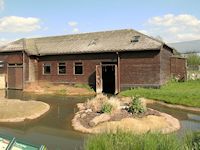

 Andean & Lesser Flamingos
Andean & Lesser Flamingos Arctic Adventure
Arctic Adventure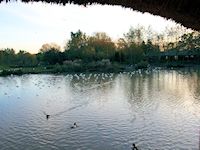

 Back From The Brink
Back From The Brink Caribbean Flamingos
Caribbean Flamingos

 Eider Lake
Eider Lake Flamingo Lagoon
Flamingo Lagoon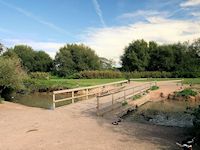

 Geese of the World
Geese of the World Mission Possible
Mission Possible
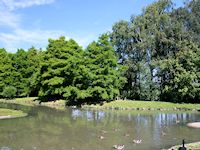
 Living Wetland Theatre
Living Wetland Theatre North America Zone
North America Zone
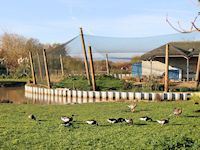
 Otter Pool Zone
Otter Pool Zone Screamers Zone
Screamers Zone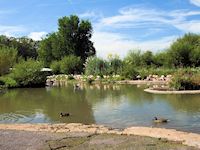
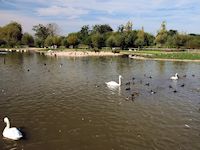
 South America Zone
South America Zone Swan Lake Zone
Swan Lake Zone

 Waterscapes Aviary
Waterscapes Aviary Estuary Shoreline
Estuary Shoreline